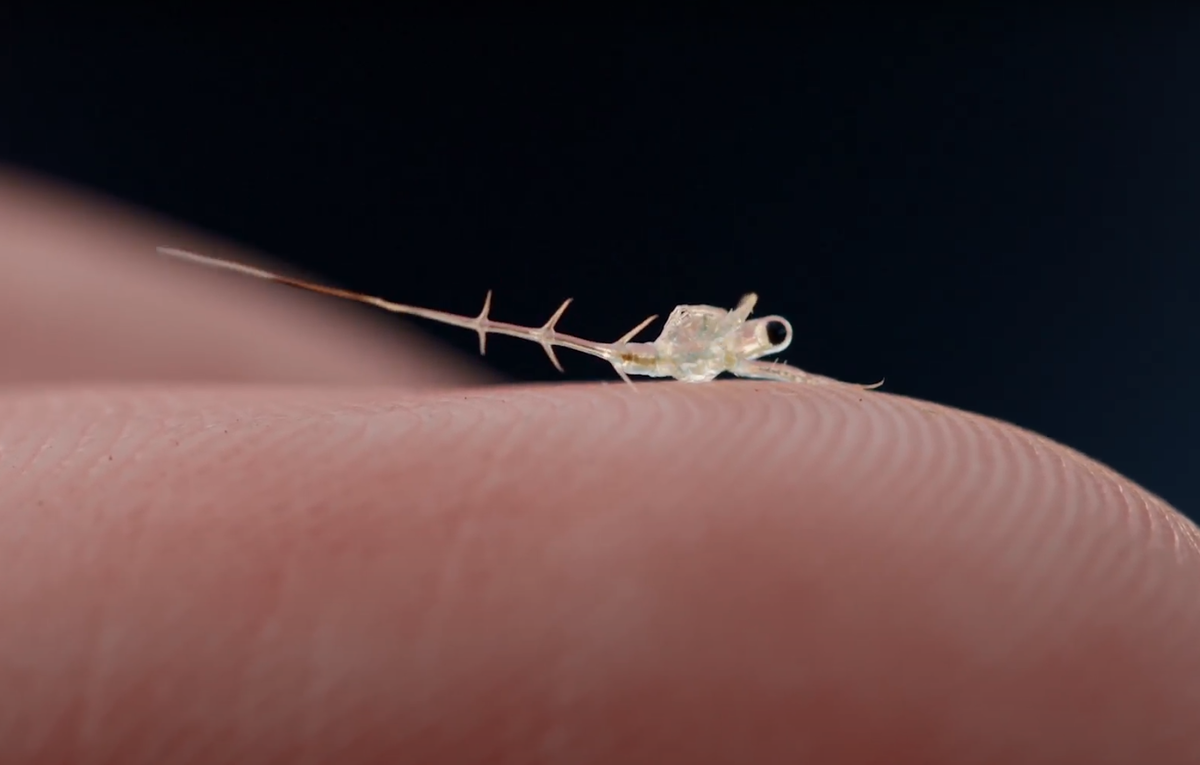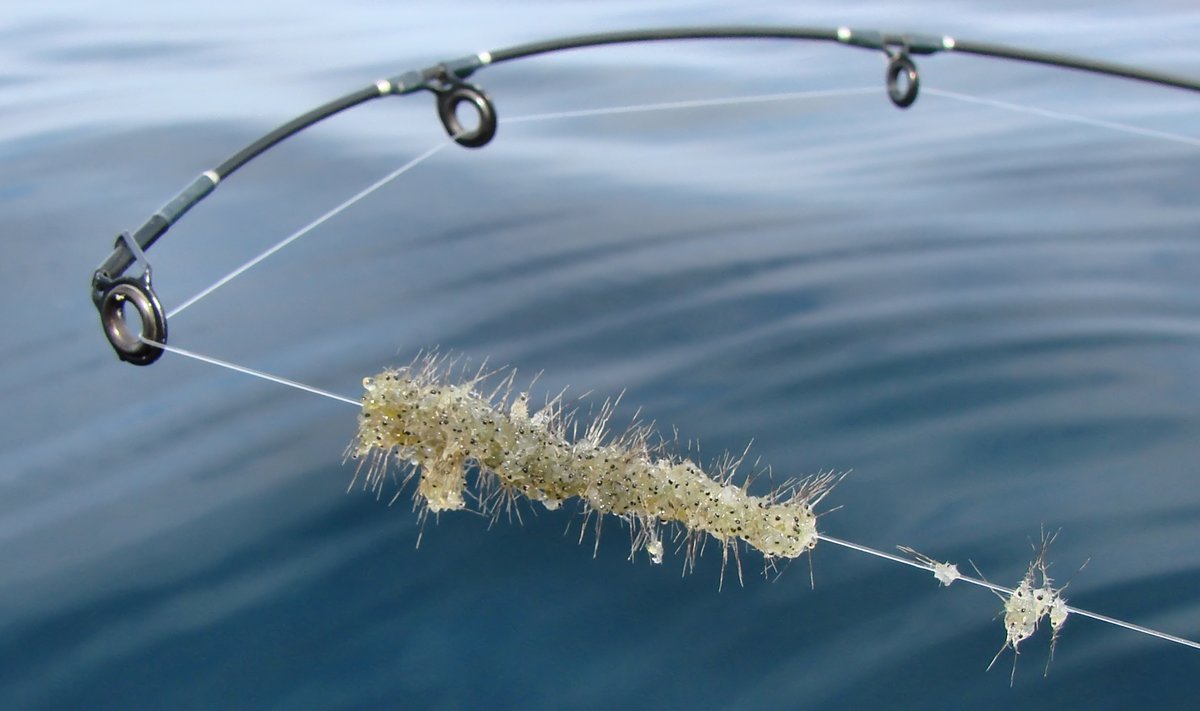Bythotrephes
Spiny water fleas are a tiny freshwater zooplankton that invade lakes and can take over the bottom of the food chain, disturbing the ecology of the food web and presenting a serious potential threat to Minnesota lakes. They can decimate populations of Daphnia and other native zooplankton resulting in a decreased food source for native fish and an increase in algal blooms. They can also clog the eyelets of fishing rods, causing problems for recreationalists. There are fewer predators on spiny water fleas than on native zooplankton because small or young native fish can’t consume their sharp, barbed spine. More about spiny water fleas.
MAISRC findings
- Click the fact sheet above to view and/or download a summary of what we know.
- Research conducted by Dr. Gretchen Hansen has shown that walleye in lakes invaded by spiny water fleas are smaller and less abundant than walleye in uninvaded lakes.
- Drs. Valerie Brady and Donn Branstrator outfitted two research vessels with fishing equipment to run real-world simulations on spiny water flea-infested lakes in Minnesota. The findings showed that fishing lines were most likely to entangle spiny water fleas, but they also get caught on downrigger cables, bait buckets, and livewells.
Research
Sustaining walleye populations: assessing impacts of AIS
The overall goal of this project is to assess the impacts of invasive zebra mussels and spiny water fleas on walleye in Minnesota lakes.
Led by Dr. Gretchen Hansen
Determining highest-risk vectors of spiny water flea spread
To learn more about spread and prioritize prevention efforts, researchers measured the relative risk of spiny water flea attachment on commonly used recreational equipment including stationary anchor ropes, trolled fishing lines, trolled bait buckets, trolled downrigger cables, and trolled simulated livewells.
Led by Dr. Valerie Brady
Characterizing spiny water flea impacts using sediment records
This project aims to test key cause-and-effect hypotheses about relationships between spiny water flea invasion and the response of important ecological, economic, and recreational services provided by Minnesota lakes including zooplankton abundance, fish abundance, and water clarity.
Led by Dr. Donn Branstrator
About spiny water fleas
Description
The spiny water flea is a member of the Crustacea, a large taxonomic group that includes crayfish, shrimp, and crabs. Adult spiny water fleas grow to be about one centimeter long. They have a single long tail with multiple barbs which helps them avoid predation. When they are grouped together, as when ensnared on fishing lines and cables, they conglomerate and form gelatinous globs.
Life cycle
Part of spiny water fleas’ success is due to their ability to reproduce rapidly – they can mature and reproduce within about one week. They can reproduce both asexually and sexually. Females can produce up to 10 young every two weeks without mating. In the fall, males and females reproduce sexually and produce resting eggs that settle in lake sediments, where they overwinter in a dormant state. These resting eggs are resistant to short-term drying (up to 4 hours) when out of the water and can establish a new infestation in a different lake.
In adulthood, they prefer cooler water and are generalist predators, meaning they are able to feed on a broad range of tiny prey.
Impacts
Spiny water fleas are a tiny freshwater zooplankton that invade lakes and can take over the bottom of the food chain, disturbing the ecology of the food web and presenting a serious potential threat to Minnesota lakes. They can decimate populations of Daphnia and other native zooplankton resulting in a decreased food source for native fish and an increase in algal blooms. They can also clog the eyelets of fishing rods, causing problems for recreationalists. There are fewer predators on spiny water fleas than on native zooplankton because small or young native fish can’t consume their sharp, barbed spine.
Distribution
Spiny water fleas are native to Europe and Asia. They were first found in Lake Superior in 1987 and first discovered in inland Minnesota lakes in Island Lake Reservoir north of Duluth in 1990. Today, they are found in Lake Mille Lacs, Lake of the Woods, and Lake Vermilion. As of 2015, the Minnesota DNR listed about 40 water bodies as infested with spiny water fleas.
How they spread
Spiny water fleas were first introduced to the Great Lakes through ballast water. Today, recreational boaters and anglers can inadvertently move them or their eggs in any residual water in boats or gear and on fishing line, bait buckets, livewells, or fishing nets.


